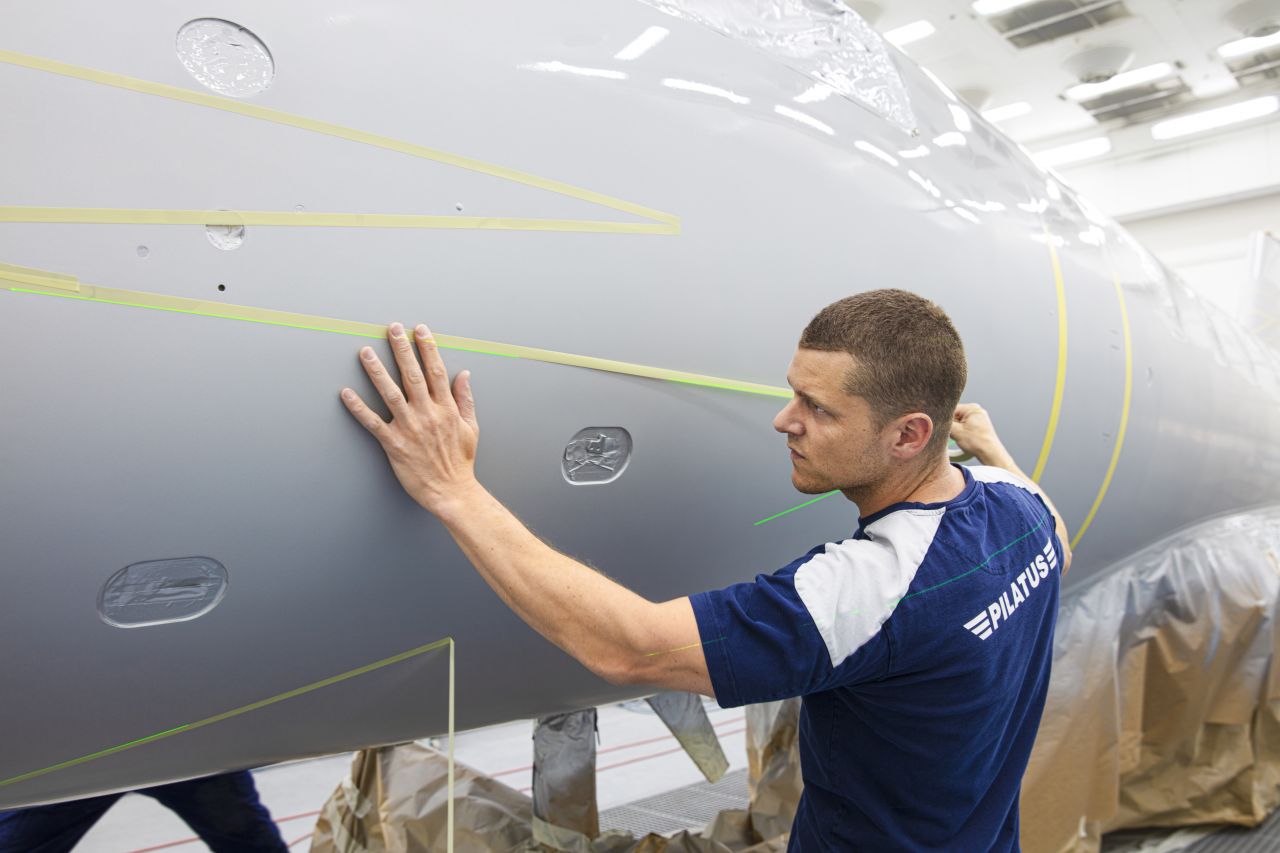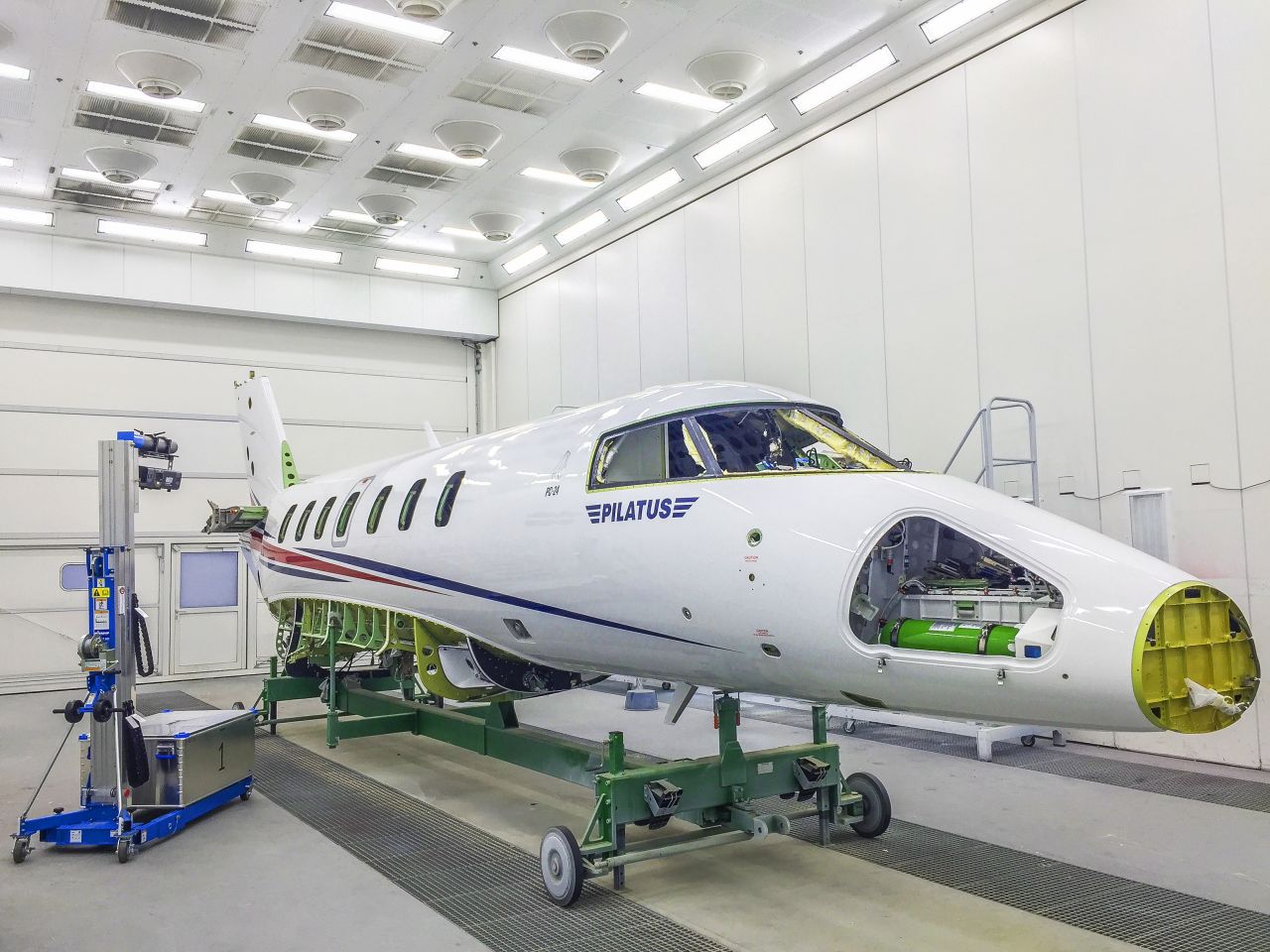Pilatus aircraft turn heads Ц and not only for their outstanding performance, their special colour schemes are eyecatchers, too! The two new lasers installed in the paint shop in July 2020 greatly facilitate the work performed by our two paint units.

A New Era Dawns
Until now, the two-dimensional colour scheme was drawn on a film by our advertising designers using a plotter and then transferred to the aircraft by the painters. The manual production steps were timeconsuming and certain errors were only after the film had already applied to the aircraft. Thanks to the new laser projectors, those difficulties are now a thing of the past. The new system projects the outlines and course of the 3D colour schemes directly onto the aircraft surface. “This investment expands the boundaries of what is possible whilst also delivering enhanced efficiency, professionalism, process reliability, and precision”, explains Kevin Da Silva Cruz, Supervisor Painting PC-24. The aircraft that have already been finished using new laser technology, demonstrate the value of the new acquisition. The quality is outstanding.
Effective and Time-Saving
In the Plastics and Mechanical Processing departments, Virtek lasers used for inserting fabric layers and positioning components have already delivered excellent results. This technology has been used for painting PC-24s since July 2020 and, since February of this year, for PC-12s as well. Various modifications to the CAD aircraft data were required beforehand. Around 80 target points were also defined on the fuselage and programmed into the software. These reflectors have to be attached to each aircraft to provide guidance for the laser. In this way, the laser is capable of projecting the outlines of even complicated colour schemes onto the top and bottom aircraft surfaces proportionally and with correct perspective. Depending on the scheme, masking tape can be used to mask directly onto the laser beam – drawing with a marker is no longer necessary. The entire design, or only the individual design element, can be projected as desired. The laser is mobile and vertically adjustable. In the past, projections onto rudders and engine cladding involved additional work steps and time-consuming assembly tasks. Today, they can easily be performed on the painting jig, thereby eliminating any risk of damage to the aircraft. This saves valuable time. In the future, the large plastic fairing between wing and fuselage will also be implemented via laser projection.

A Win-Win Situation
The introduction of the new programme will also benefit our customers. High reproduction precision is guaranteed for fleet aircraft. Data integration in the product data warrants the modification process and traceability. Training aircraft will also be integrated in the new system in the near future.
The Key to Success
УThe 3D data and the laser projector are an important key to success. It gives us flexibility and more assurance, especially with complex colour schemes. We are able to react quickly in case of modificationsФ, explains Peter Lauber, Team Leader Painting PC-24. He also emphasises the excellent teamwork between NC-programming, the equipment procurement unit and the painters and advertising designers during the rollout of the new laser technology. Although the new technology has not entirely replaced all manual work, discussions about accuracy and correct perspective of the colour scheme are now a thing of the past. With the new laser, the results are sure to be right!

